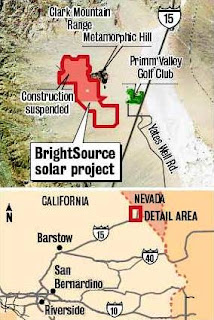Owls, Mules and Lizards: the makeup of federal land management
Today we have federal employees who are paid to stop productivity
by Marita Noon
 |
| Marita Noon |
Farming, ranching, mining, and extraction are the foundation for everything else. They are what make food, energy and manufacturing possible by proving the raw materials for our personal and economic growth. Yet these bedrock American industries have, little-by-little, been chiseled away—so subtly that most of us did not notice until now; now, when the economy continues to teeter with a slight uptick one month, back down the next. The public, America’s citizens, people who’ve never paid attention to politics or the economy, want to know what happened; they want to know, “Why?”
The answer is really quite simple and reversing the trend—growing the economy—is equally simple. But America’s citizens must push for policy-induced prosperity.
Today we have federal employees who are paid to stop productivity. Their job is to enforce regulations, not encourage expansion. The federal government used to help people establish a farm or ranch, or stake a claim. Remember the whole idea of “homesteading?” People took a barren parcel of federal land, treated it as their own and made something from nothing. Their efforts were rewarded with the deed.
While homesteading is a thing of the history books, policy that stopped development didn’t begin until the seventies. Initial results of a new study indicate that major industries once prevalent in the west, such as logging, cattle ranching, and mining, have moved out—in fact, been chased out. Instead of exporting, we now import.
What happened in the seventies to change federal lands management? The birth of the environmental movement in the late 1960s.
This shift in policy is most evident through the story of the spotted owl—a declining species said to favor “old growth forest.” The effort to protect the owl began in 1968. It was ultimately listed as “endangered” in 1990. Observing history, we see the owls’ numbers have not increased with the protection and they’ve been found in locations they supposedly do not like. While the listing had little impact on the owl, it did have a killing effect on the logging industry. Logging on federal lands once accounted for more than half of Oregon’s harvest. By 2008, less than ten percent.
In New Mexico’s Gila Forest access to federal lands has been continually cut back. Today, based on numbers from the 1970’s, there are thirty percent fewer cattle. Because of the Endangered Species Act (ESA) and wilderness designations, the Forest Service required Terrell Shelley, whose family has continuously raised cattle on the same land for 125 years, to use mules to make repairs to concrete dams on his allotment. 250 mule loads of concrete were hand mixed. Not many people today are willing to continue ranching under such restrictive conditions.
Mining faces similar obstacles. In Montana, exploration for tungsten was completed in the seventies by Union Carbide. To extract the resource from what is now an “inventoried roadless area,” the Forest Service requires that the drilling equipment be hauled by pack mules—who are feed “certified weed free hay,” and that the land be cleared and then reclaimed using hand tools. Once again, productive activity is discouraged.
Due to punitive federal policy, we now have less logging, less ranching, and less mining; less jobs, less productivity, and less wealth creation.
The oil and gas industry of West Texas and Southeastern New Mexico is next. The Fish and Wildlife Service (FWS) has proposed that the Sand Dune Lizard (AKA Dunes Sagebrush Lizard) be listed as an endangered species under the ESA. This lizard frequents sites where oil and gas development provides good paying jobs and economic stability. If the FWS proceeds with the “endangered” listing, the entire region could well go the way of logging in the Pacific Northwest or Cattle Ranching in the Gila Forest.
Now, we see how industries have been shuttered and jobs lost. We watched while entire communities became ghost towns. “Protection” and “wilderness” sound like nice ideas until you see the economic destruction they have wrought. With the benefit of history, America’s citizens can take a stand and reverse the trend. Federal agencies hold hearings where we can comment. We can make phone calls and send e-mails.
The employees at the various federal agencies don’t make the policies. They are simply enforcing the regulations. But if we speak up, we can change the game.
The public comment period for the proposed lizard listing ends May 9. Make the effort, pick up the phone. Talk to the federal employees (Debra M. Hill: 505-761-4719, Tom Buckley: 505-248-6455).
Wouldn’t it be great if the federal government once again helped, instead of hindered?
Marita Noon is the Executive Director at Energy Makes America Great Inc. the advocacy arm of the Citizens’ Alliance for Responsible Energy. Find out more at http://www.energymakesamericagreat.org/.




